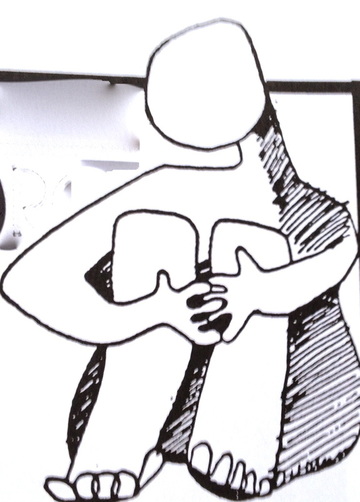- Tuning Scores
- Unimaginable aka CI interrogates its history
- aboliton is ...a dance response
- articles//vids
- CDP writings/images
- Redux Forward
- interrogating CI history
- dance bio
- centering edge
- Dance Sensoria
- Fissure
- Vashon
- one2one
- about the works
- contact email // archives
- Tuning See Play Do
- 2 events in NC
- dance w dharma 1
- mayfield workshop!!
- old message

Embodied Life includes the practice of Feldenkrais Awareness Through Movement, meditation and embodied dialogue. Russell Delman, the founder of Embodied Life work is a longtime Feldenkrais practitioner, teacher and trainer of teachers. The Feldenkrais Method is a soft approach to working with the body and mind. It uses very ordinary movements and guided experiences to help us become conscious of our experience “just as it is.” Our bodies’ are incredibly intelligent and know how to move efficiently and with pleasure. Often though, we move in habitual and sometimes painful patterns in an unconscious manner. In this work we learn to move in easeful and pleasurable ways. We learn to not move into pain thus discovering all the other places we can move that do not generate pain or unnecessary stress.
Sometimes our idea of how we move is very different than how we actually move. For example, in standing we may think that by hanging our arms, our fingers would touch our legs at the same corresponding location on each leg. When we look at the sensations with awareness we may discover each arm has a very different feel and in fact one hangs a bit further towards the feet than the other. Similar to how weather websites tell us the measured temperature and the feels like temperature, it points to the difference between an idea/concept and actual experience.
In moving lessons the teacher guides us thru elements of every day movements often while we are lying on the floor. We follow simple, clear verbal instructions not a visual demonstration of the movement. This style of learning helps us to develop awareness through experience rather than performing what something “should” look like. We are reminded to give gentle attention to sensations, and we take many rests in order to let the nervous system integrate new information. During the lesson, movement patterns emerge that make sense to the nervous system and forge new, healthy pathways that leave us feeling good.
Embodied Life practices emphasize aspects of the living, present moment. Signs of life such as the sensations of contact, breath and sound are constant experiences of presence. We often miss those obvious experiences and, similar to “white noise,” we start to not hear it. Embodied Life work aims to help us integrate awareness of our living presence in our everyday life.
Embodied Life practice includes learning a meditation style that cultivates an attitude of kindness towards whatever is arising in our mind and body. Influenced by a Zen approach, the practice starts with connecting directly to our sense of body.
Embodied Inquiry /Listening-Speaking is the third part of the Embodied Life work and is influenced by Eugene Gendlin’s Focusing. These practices encourage us to sense into the body to identify and connect with our inner life and to listen and speak from that place. The theme of returning our attention to the sensations of body presence is a vital part of this work.
